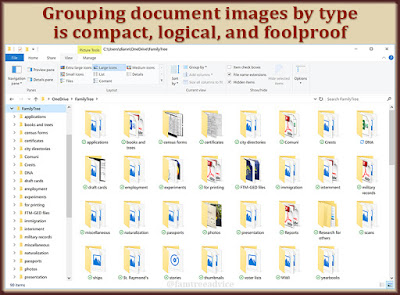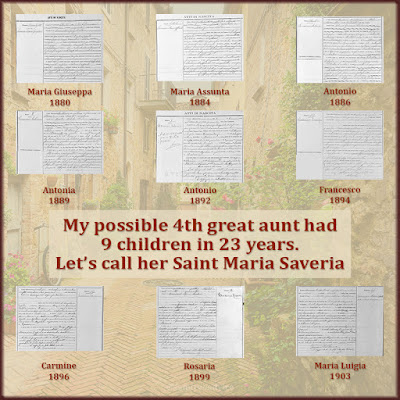I want you to slow down and do it right the first time. It's your legacy!
Hurray! You found a 1940 census form you needed for your grandmother's first cousin with his wife and son.
How many steps do you need to take before moving on to something else? If you don't want to have any regrets later on, you should take all 4 steps below. What kind of regrets are we talking about?
- Working to find that census again in the future, going to add it to your tree, and realizing it was there all along.
- Thinking a relative died before the census date, then seeing you forgot to add their census facts.
Census documents are only one type of genealogy image you're going to want for your family tree. But the census is one of the most important documents, so it's a good example.
Follow these 4 steps each and every time you find a new census document for your family tree.
 |
| Genealogy is a journey. You can't take a journey without taking steps. |
Step 1. Rename and Store the Image
Download the census sheet and name it for the head of household. My preferred format is LastnameFirstnameYear. Examples are:
- AkiyamaTomoko1940.jpg
- BlancatoSebastiano1920.jpg
- ColabellaCarmella1925.jpg
File your document image away immediately. My system is logical and simple. Each of my census images goes right into the "census forms" folder.
Step 2. Annotate the Image
Add metadata to the image file itself. Metadata are the key facts you need to know about this document.
The way you do this on a Windows computer is to:
- Right-click the image and choose Properties.
- Click the Details tab.
- Fill in the Title field with a descriptive caption for the image. For example, "1920 census for Sebastiano Blancato and family". Start with the year and each person's images will sort themselves chronologically.
- Fill in the Comments field with all the details about the location and source of this image:
- the lines numbers the family is listed on
- the name of the document collection
- the image's URL
- the enumeration district, sheet number, and any other page-specific info
If you fill all that in, there's no mistaking—or forgetting—the source of this image.
Step 3. Add the Image and Facts to Your Family Tree
Attach the image to the head of household in your family tree. Now pull out all the facts you can.
- Record a Residence fact for the head of household. "12 Jan 1920, 260 East 151st Street, Bronx, Bronx County, New York, USA."
- Record an Occupation fact for the head of household. "19 Jan 1920, building painter in Bronx, Bronx County, New York, USA."
 |
| Everyone who lived in that household needs the facts on their census sheet. |
Now add the same image and Residence fact to each family member listed in that census. You don't have to attach another copy of the image to each person. The image is there, so share it with each person in the household.
See who else in the household has a job, and give them an Occupation fact.
Search for other facts that matter to you:
- Does it say how long the couple has been married? If so, figure out their marriage year and use this census as your source.
- Does it say when they immigrated?
- Are they naturalized?
- Is someone widowed?
- Is anyone living with them who's not in the immediate family?
- Is the wife's family in the same building?
These are all good facts to record.
Step 4. Keep Track of What You Found
Let future-you know you've got this image. I record all my found documents in a spreadsheet I call my document tracker. In the Census column, I add the year of this newly found census image to each member of the household. If I don't do this immediately, my inventory will be unreliable.
| Do this as you go, and it isn't such a chore. It's worth it. |
Now, Make it a Routine
If you take your time, get into this groove, and follow all the steps, you'll only handle each census image once. You'll have everything perfectly documented from the start. You'll greatly reduce your own human error. You'll save yourself from searching for documents you've already got.
I follow these rules for each type of document image I find.
If it's a birth record, I add the baby and all their facts (birth date, baptism date, birth address). I make sure I have the correct names for the parents. I decide if the parents' ages in this new document are more reliable than what I currently have for them. I add their occupations if they're included.
If it's a marriage record:
- I record the dates of their marriage banns, license, and marriage, if available.
- I record the bride and groom's birth dates, their parents' names and ages.
- I note any occupations and addresses.
- I add a title and description to each image before putting it in my family tree.
- I attach all documents to the groom and share them with the bride.
- Finally, I add a notation to my document tracker for both bride and groom.
When I've been adding documents to my tree all day, following all these rules, it takes quite a bit of time. When it's getting late, and I'm only able to add one more document before calling it quits, I have to steel myself. I know how important it is to the quality of my family tree that I do it right—and do it thoroughly—the first time.
Is your document-processing routine fortifying your family tree?





